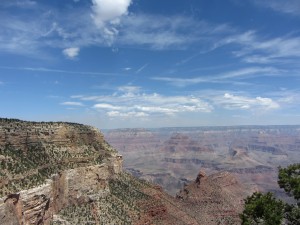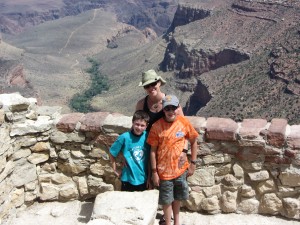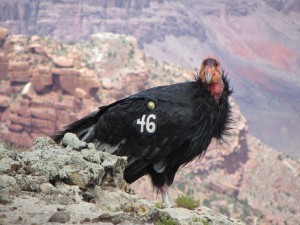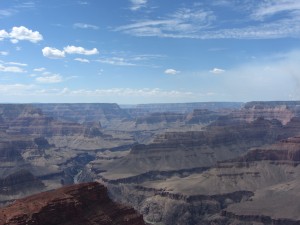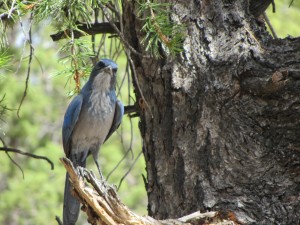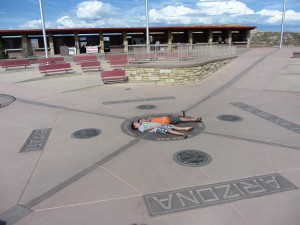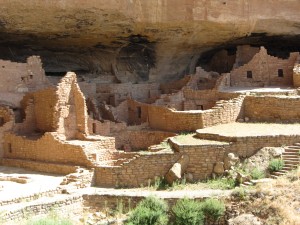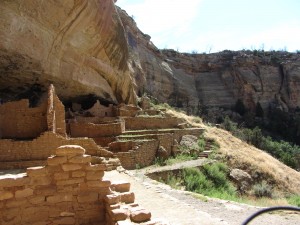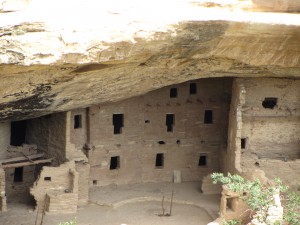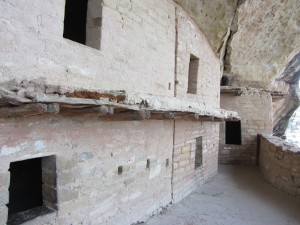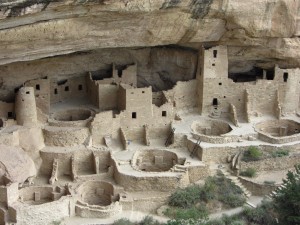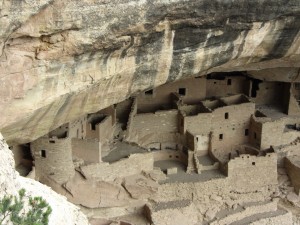It is hard to imagine the sheer size and magnitude of the Grand Canyon unless you are standing on the rim and looking as far as your eye can see from right to left and seeing a canyon over 270 miles long and over a mile wide. No pictures can do it justice, I know that phrase is overused but it is true. The evening we arrived we had reservations to eat at the famous El Tolvar Lodge Restaurant. As we arrived we walked over to the rim for our first vista view and WOW is it BIG. We had a nice dinner at the Lodge and called it a day.
The following day, Beck got us to hike down into canyon on the Bright Angel Trail for about a quarter of a mile to get an idea of how it feels to be inside the canyon. This is the trail that the mule train takes to the bottom of the canyon as well as many hikers who walk down to the Colorado River, which carved this wonder of nature over millions of years. This trail was originally used by Native Americans and is only about nine miles long but it takes about eight to ten hours to hike out from the river. Needless to say, we will save that for another family visit or Griffin and Beck have said they want to come back and do a brother hike down to the river and ride the rapids.
Afterwards, we hiked for about two miles around the rim trail to get a great view of the canyon from a number of viewing points. The best was from Hopi Point which allows you to get an incredible East-West view for miles and miles. Along the way we saw a Condor, lizards and other birds flying around the canyon.
The next day we headed a few miles down the road to the Desert View area and the Indian Watchtower, which was designed by Mary Colter to look like other watchtowers she had seen in the Southwest. She even had Hopi native paint murals inside for an authentic look. After this adventure we said goodbye to the Grand Canyon and got ready for our next adventure to Mesa Verde National Park.
On Friday we loaded up and headed to Mesa Verde, the trip entailed a route through Navajo lands and to the Four Corners area, the only place in America where you can stand in four states at once-Arizona, Utah, New Mexico and Colorado. We barely got going before we saw a roadside market and stopped to take a look. The Navajos we met there were very open about their culture and told us the correct way to say hozho and what it means to them. Angie spoke with some of the women about their lives and their children. It seemed every few miles there were roadside stands selling arts and crafts, it is a bit sad to see these people having to depend on tourists for their livelihood but the reality is that there is hardly any industry in the area.
The landscape is like something from a space movie, one can see how some people think the moon landing was faked and filmed out in the desert. We arrived at the Four Corners in the afternoon and discovered how we could stand in four states at once. This area which is actually on Navajo land is in a desolate area and has a marketplace as well were native peoples sell their wares.
After this stop we headed to Mesa Verde N.P., we arrived at the Far View Lodge and boy is that name correct. The Lodge is at approximately 8200 feet elevation and you can literally see to the Rocky Mountains from here. As we got to our room we were surprised to see three large Mule deer grazing at our doorstep.
On Saturday we had two reservations for Ranger guided tours of some of the cliff dwellings that Mesa Verde is famous for. The first was called Long House and it is one of the largest dwellings in the Southwest, it is thought that between 60-80 people may have lived at this site. After a steep trail down to the site we were granted the view of this 800 year old ruin were ancient Puebloans lived and breathed. They grew beans, corn and squash on the Mesas, hunted, raised turkeys and generally lived a good life before abandoning these sites and moving south to follow the resources. Around 1240 A.D. these sites began to abandoned and by 1300 were empty. We saw petroglyphs-rock drawings, kivas-ceremonial living rooms, family houses and seep springs (areas at the base of rocks were water seeps out) were these people got their water in this harsh, dry land.
Our next tour was of Balcony House, a tour that involved climbing a 32 foot ladder, squeezing into a 12 foot 18″ tunnel and climbing up a 60 foot open rock face. Needless to say all the boys loved it and Mom tolerated it for our sake. It was amazing to see where and how these societies lived using local resources to build homes and live off the land. As Griffin said ” They were so smart in being able to use what nature gave them to live.”
We had a full day of visiting Mesa Verde, ate dinner at the Lodge and got ready to head to Taos, NM on Sunday.
